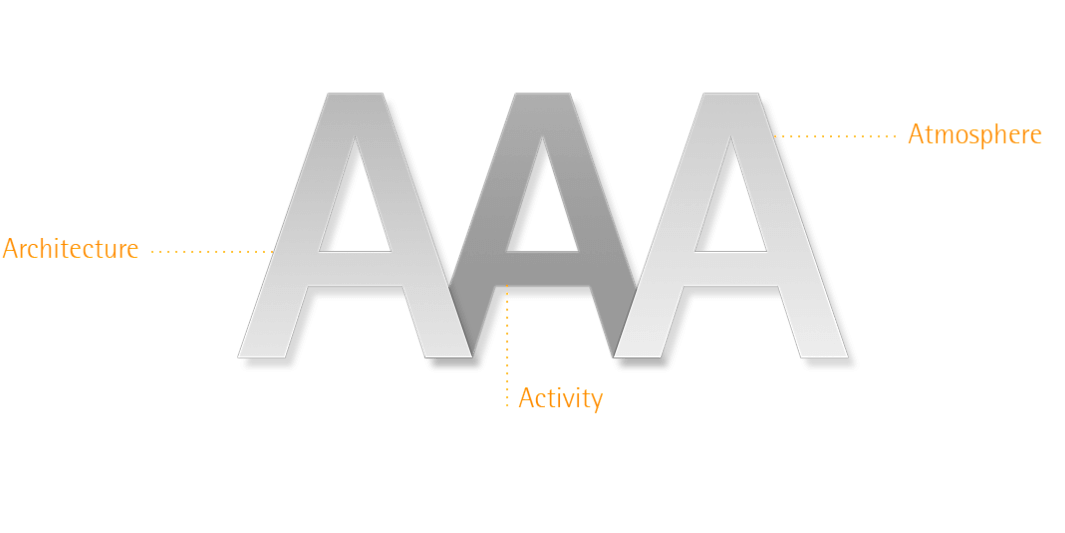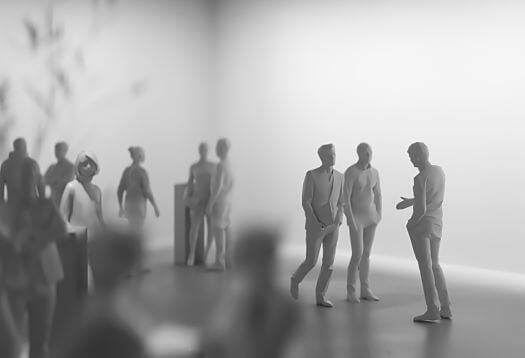Human Centric Lighting, or HCL for short, stands for a planning approach that puts people and their requirements at the centre of lighting design. Human Centric Lighting addresses the visual, emotional and biological effects of light. In addition to visual criteria such as the specific visual task and good orientation in the room, it also includes the non-visual effects of light on people. In addition to cones and rods, the two photoreceptors for vision, our eyes also have another light-sensitive receptor type. This was only discovered at the beginning of the 21st century and adopts a role in the synchronisation of our day-night rhythm. In line with this, HCL-oriented architectural lighting takes into account the visual perception of architecture, the visual task as well as the emotional and biological component.
Human Centric Lighting (HCL) explained by ERCO
Contents
What is Human Centric Lighting (HCL)?
How Human Centric Lighting works in practice?

The concept of Human Centric Lighting is not new. Long before current research into the non-visual effects of light, pioneers of architectural lighting such as Richard Kelly and William Lam formulated the principles of perception-oriented lighting design in terms of light for seeing, looking at and viewing, or ‘activity needs’ and ‘biological needs’. In combination with the new findings of chronobiology, we have worked out a formula that explains precisely and in a practical way what Human Centric Lighting is all about.
AAA stands for architecture, activity and atmosphere. For a better perception of space in architecture, make the vertical surfaces visible. Support activities such as concentrated work, but also interpersonal communication, with the right light. Create the right atmosphere by using suitable light for the time of day. For us, this is real Human Centric Lighting.

A for Architecture
- Make the surroundings perceptible through light on vertical surfaces
- Emphasise functional areas in rooms with individual lighting
- Integrate luminaires into the architecture via appropriate mounting methods, luminaire designs and arrangements

A for Activity
- Optimise visual comfort through glare-controlled luminaires and correct luminaire arrangements
- Adjust the brightness to different visual tasks
- Adjust the colour temperature for the circadian rhythm

A for atmosphere
- Create temporal orientation by adapting the course of daylight to the interior space
- Achieve individualisation through changeable lighting scenes that can be set according to personal preferences and moods
Lighting Experience Showroom in Singapore
Our lighting experience showroom features our innovative lighting solutions in action.
Schedule an appointment with us in our lighting experience showroom and discuss your next project.
Benefit from Human Centric Lighting
As a lighting designer
- Include qualitative aspects and thus offer more comprehensive lighting design services
- Contribute to promoting the well-being of users with your holistic lighting concepts
- Qualitative lighting design is not only visually more attractive – the advantages also outweigh quantitative designs in terms of energy consumption
As a user
- Enable colleagues to control light according to their personal preferences
- Provide colleagues with light with a high level of visual comfort, thus establishing pleasant working conditions
- Offer colleagues both a high quality and attractive working environment for more motivation and creativity
As a property owner
- Achieve added value for the property through qualitative lighting

ERCO
ERCO understands light as the fourth dimension of architecture.
The ERCO Light Factory in Lüdenscheid is a leading international specialist in architectural lighting using LED technology. Working closely with architects, lighting designers and engineers, ERCO develops lighting tools for customised lighting solutions in architectural projects for culture and retail, work and hospitality, life and public buildings.
